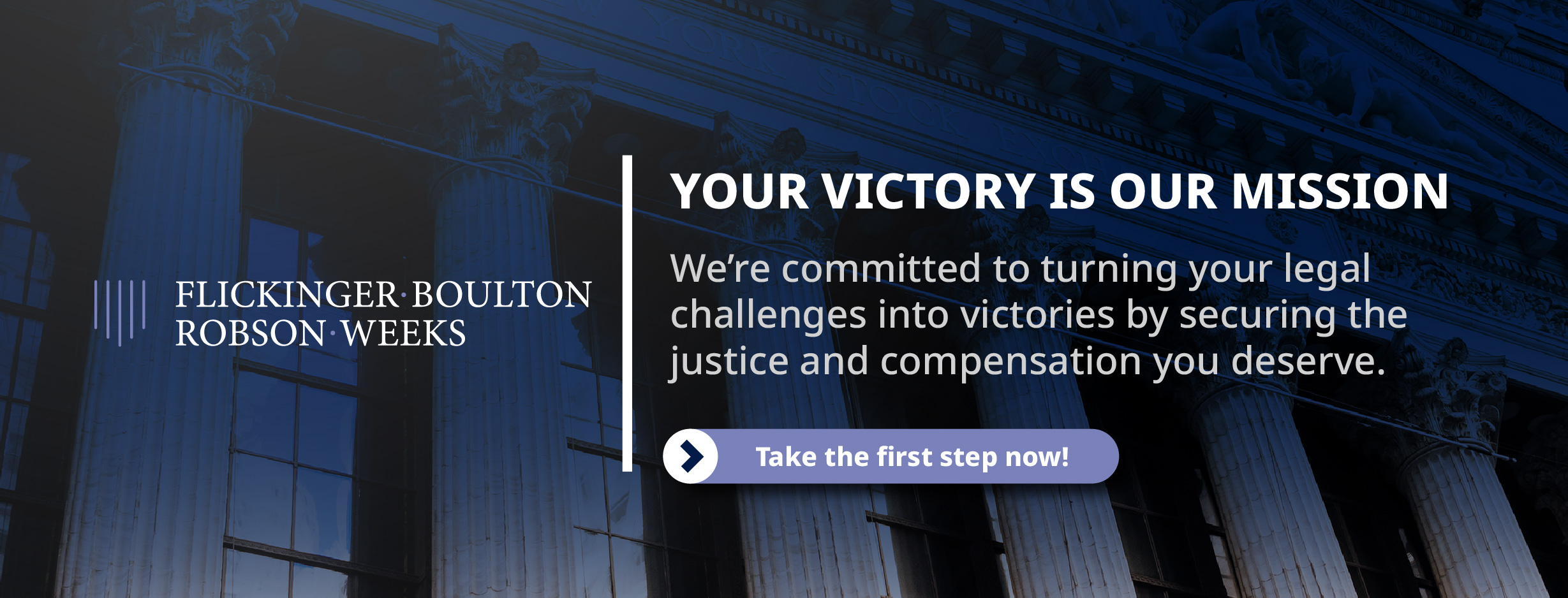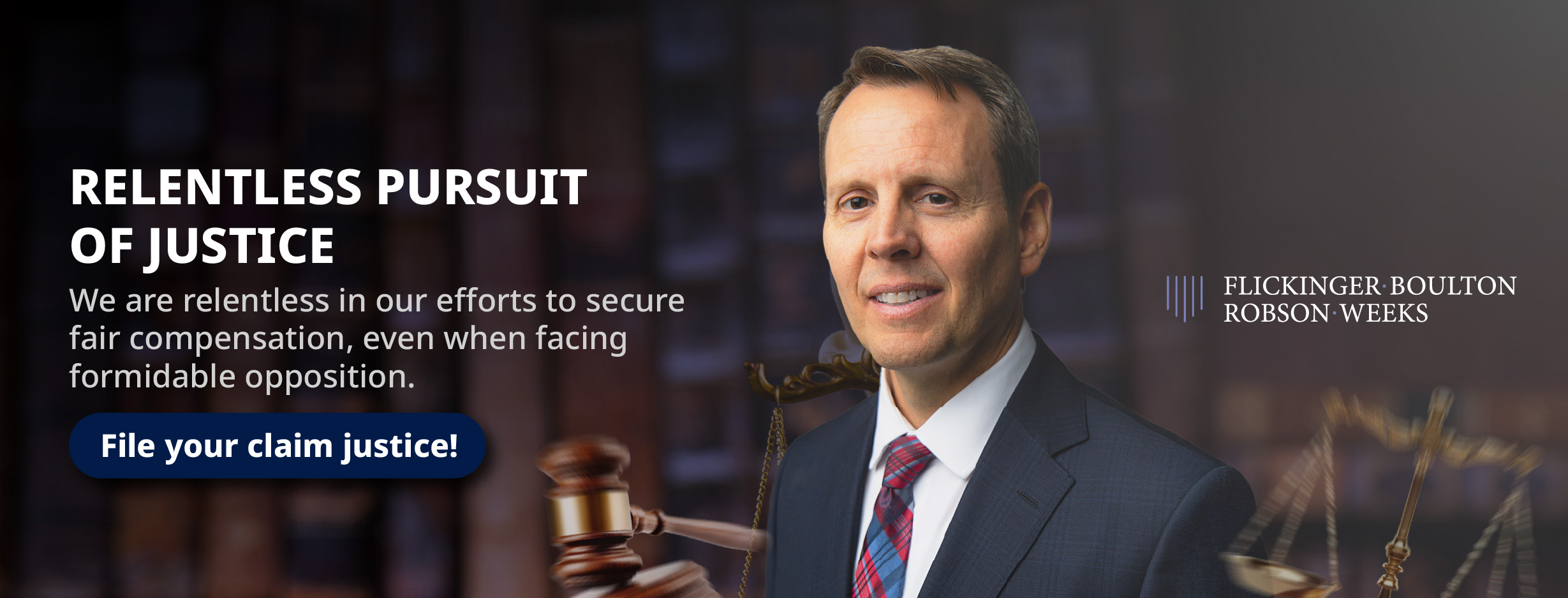¡Hablamos Español!
When you’ve been injured due to someone else’s negligence in Utah, you may wonder whether to settle your personal injury claim or take your case to court. While settlements are often the quickest way to receive compensation, lawsuits may be necessary when insurance companies refuse to offer a fair amount.
Understanding the differences between settlements and lawsuits can help you make the best decision for your specific situation. At Flickinger Boulton Robson Weeks, we have extensive experience negotiating strong settlements and litigating cases when necessary.
Our goal is to ensure you receive the maximum compensation possible, whether through negotiation or trial. Let us guide you through the legal process and fight for the justice you deserve.
When pursuing a personal injury claim in Utah, one of the biggest decisions you’ll face is whether to settle or take your case to court.
While settlements offer a quicker resolution, lawsuits can sometimes result in higher compensation. Understanding the pros and cons of each option can help you make an informed decision about the best path forward.
Settlements are the most common way personal injury claims are resolved. In a settlement, both parties agree on a compensation amount without going to trial. Settling offers several benefits:
Lawsuits can take months or even years, while settlements are often reached within weeks or months.
Trials involve court fees and expert witness costs, which can add up.
Avoiding the uncertainty and pressure of a courtroom trial can make the process easier for the injured party.
A settlement ensures you receive a payout, whereas a lawsuit carries the risk of losing in court.
However, settling can sometimes mean accepting a lower amount than what you might receive through a jury verdict.
Taking your case to court may be necessary when the insurance company refuses to offer fair compensation. Some situations where litigation may be the best option include the following:
While lawsuits can lead to higher payouts, they also come with risks, including longer timelines and the possibility of an unfavorable verdict.
Deciding whether to settle or go to trial depends on the specifics of your case. A skilled personal injury lawyer can evaluate your claim, negotiate aggressively with the insurance company, and determine if litigation is necessary. At Flickinger Boulton Robson Weeks, we fight for the compensation you deserve, whether through settlement or trial.

When a personal injury claim cannot be resolved through settlement, filing a lawsuit may be necessary to pursue fair compensation. While the legal process can seem overwhelming, understanding each step can help you prepare for what lies ahead.
Below is a breakdown of the key stages in a personal injury lawsuit in Utah.
The lawsuit officially begins when the injured party (plaintiff) files a complaint in the appropriate Utah court. This document outlines the details of the accident, the defendant’s (at-fault party’s) negligence, and the compensation being sought. The complaint is then served to the defendant, informing them of the lawsuit.
Once served, the defendant has a set response period, typically within 21 days in Utah. They may:
If the defendant disputes the claim, the case moves forward to the discovery phase.
Discovery is a critical part of the lawsuit where both parties gather and exchange evidence to build their cases. This includes:
The discovery phase ensures both sides have access to the same information before trial.
Before proceeding to court, both sides may attempt to reach a settlement through mediation or negotiations. Mediation involves a neutral third party who helps facilitate a resolution. Many cases settle at this stage to avoid the risks and expenses of trial.
If a settlement is not reached, the case goes to trial. A personal injury trial in Utah typically involves:
The case is then decided by either a judge or jury, who determines liability and the compensation amount.
If either party disagrees with the verdict, they may file an appeal, extending the legal process. However, many cases end with the court’s final decision, and the plaintiff receives their awarded compensation.
A personal injury lawsuit in Utah involves several legal steps, from filing the complaint to potentially going to trial. While settlements often resolve cases faster, lawsuits may be necessary when insurance companies refuse fair compensation.
Having an experienced legal team like Flickinger Boulton Robson Weeks on your side ensures you navigate the legal system effectively and fight for the compensation you deserve.

One of the most common questions after an accident is, “How long will my personal injury case take?” The answer depends on several factors, including the case’s complexity, the insurance company’s willingness to settle, and whether a lawsuit is necessary. While some cases are resolved within months, others can take years to reach a final outcome.
Below is a general timeline of what to expect.
After an accident, the first step is to seek medical treatment and consult a personal injury attorney. Your lawyer will investigate the case, gather evidence, and calculate your damages. This process can take anywhere from a few weeks to a few months, depending on the availability of medical records, accident reports, and witness statements.
Once the claim is prepared, your attorney will file a demand letter with the insurance company, outlining your injuries, damages, and requested compensation. The insurer will review the claim and respond, which may lead to negotiations.
Many personal injury cases in Utah are settled without going to court. The negotiation process involves back-and-forth discussions between your attorney and the insurance company.
If the insurer offers a fair settlement, the case can be resolved within a few months. However, insurers often start with low offers, requiring extended negotiations that could take several months to a year.
Factors that can slow down settlement negotiations include:
If negotiations fail and the insurance company refuses to offer fair compensation, filing a lawsuit may be necessary.
If a lawsuit is filed, the legal process officially begins. The discovery phase, where both sides exchange evidence and conduct depositions, can take anywhere from six months to a year or longer. The complexity of the case, the court’s schedule, and the cooperation of both parties affect this timeline.
During discovery, attorneys:
If the case goes to trial, additional delays occur. Depending on court availability and case complexity, personal injury trials in Utah can take several months to years. While trials often result in higher compensation, they are time-consuming and unpredictable.
The timeline for a Utah personal injury case varies widely. Some cases settle in a few months, while others take years if they go to trial. Having an experienced attorney from Flickinger Boulton Robson Weeks can ensure your case moves efficiently while maximizing your compensation. Contact us today to discuss your legal options if you’ve been injured and we can help you navigate every step of this complex process.
While most personal injury cases settle before reaching trial, some disputes require litigation to ensure fair compensation. If your case goes to trial in Utah, it’s important to understand the legal process, what to expect in court, and how a judge or jury will determine your compensation.
Trials can be complex and time-consuming, but with the right legal representation, you can effectively present your case and fight for the justice you deserve.
Before trial, both sides complete pre-trial preparations, which include:
Reviewing evidence, including medical records, accident reports, and witness statements.
Preparing witnesses and expert testimonies.
Filing legal motions to include or exclude specific evidence.
Conducting mock trials or jury research to anticipate potential challenges.
Your attorney will ensure your case is strong and you understand what to expect during testimony and cross-examination.
In cases where a jury is involved, the process begins with jury selection, also known as voir dire. Attorneys from both sides question potential jurors to ensure impartiality. If any juror has a bias that could impact the case, they may be dismissed.

Once the trial begins, both attorneys present their opening statements. Your attorney will outline your case, explaining how the accident occurred, the extent of your injuries, and why you deserve compensation. The defense attorney will then present their argument, often attempting to minimize your injuries or shift blame.
The next phase involves presenting evidence to support your claim. This may include:
During this stage, the defense will also present their evidence, often challenging the severity of your injuries or disputing liability.
Both sides have the opportunity to cross-examine witnesses, questioning their credibility and challenging their statements. This can be one of the most intense parts of the trial, as the opposing side will attempt to discredit key evidence.
After all the evidence has been presented, both attorneys deliver closing arguments. Your attorney will summarize your case, reinforcing why you deserve compensation. The defense will argue against your claim, often suggesting that the amount requested is excessive or that their client was not at fault.
If the case is being heard by a jury, they will deliberate in private to reach a verdict. In a bench trial (where a judge decides the case), the judge will review the evidence and issue a decision.
The verdict will determine:
Whether the defendant is liable for your injuries.
The amount of compensation awarded for medical expenses, lost wages, pain and suffering, and other damages.
Going to trial can be a lengthy and challenging process, but it is sometimes necessary to secure the compensation you deserve. At Flickinger Boulton Robson Weeks, we are prepared to fight for you in court and ensure your case is effectively presented. If you are facing a personal injury trial, contact us today to discuss your legal options.